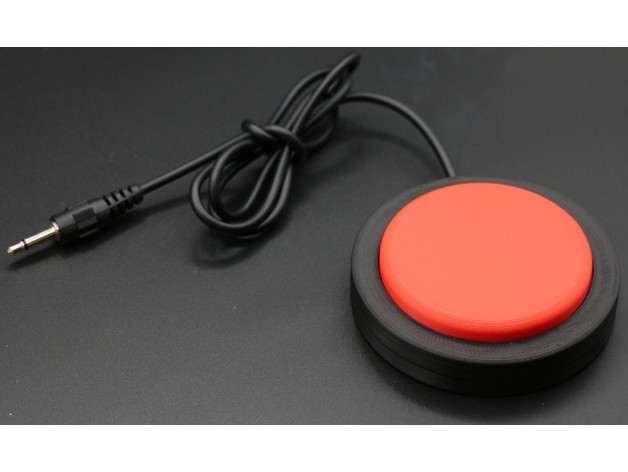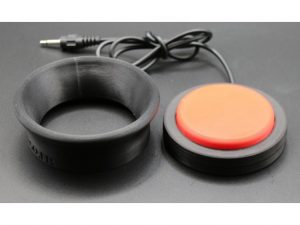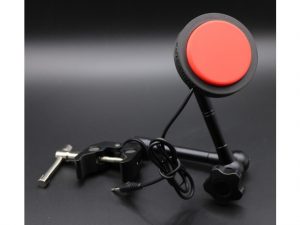 3D printing has become an invaluable way of helping people with disabilities. It’s an inexpensive method of creating assistive devices that can be easily personalized to the user, and many people, from professional occupational therapists to everyday makers, have taken advantage of the technology to create inventive devices to help those in need. Pôle-Ergo is a group of French occupational therapists dedicated to improving the lives of disabled people through assistive devices and other alterations to daily life, and in the past has taken advantage of 3D printing to create some of those devices: a wheelchair joystick, for example, and a universal wireless switch.
3D printing has become an invaluable way of helping people with disabilities. It’s an inexpensive method of creating assistive devices that can be easily personalized to the user, and many people, from professional occupational therapists to everyday makers, have taken advantage of the technology to create inventive devices to help those in need. Pôle-Ergo is a group of French occupational therapists dedicated to improving the lives of disabled people through assistive devices and other alterations to daily life, and in the past has taken advantage of 3D printing to create some of those devices: a wheelchair joystick, for example, and a universal wireless switch.
 Now Pôle-Ergo has taken on a new project: an adaptable switch or contactor, which is a button commonly used for people with disabilities to access electronics. The button transforms motor gestures without precision into signals that can be interpreted into signals used by computers, tablets, mobile phones or other devices. These contactors are frequently used in the occupational therapy field, but according to Pôle-Ergo they can be difficult to use when they aren’t designed to meet the specific needs of the individual user.
Now Pôle-Ergo has taken on a new project: an adaptable switch or contactor, which is a button commonly used for people with disabilities to access electronics. The button transforms motor gestures without precision into signals that can be interpreted into signals used by computers, tablets, mobile phones or other devices. These contactors are frequently used in the occupational therapy field, but according to Pôle-Ergo they can be difficult to use when they aren’t designed to meet the specific needs of the individual user.
Thus, Pôle-Ergo created a 3D printable contactor that can be modified according to the user’s motor characteristics, habits or tastes. The various parts of the contactor assemble like Legos, with a series of options that allow it to respond to any potential situation.
“As an occupational therapist, I regularly use commercial switchs, however, if they are suitable most of the time, I have sometimes difficulty finding the right one hence the idea of being able to personalize them according to the particularities of the people concerned,” Guy Ehretsmann of Pôle-Ergo told 3DPrint.com.
 The project offers several options, all available on Thingiverse. There is an ergonomic edge and multiple options for ergonomic buttons, as well as a GoPro mount. Users can easily try out different designs before deciding on one that is right for them. Some inexpensive hardware is required: an internal button and mini jack cable will cost about $2.00, while the GoPro supports could run anywhere between $10 and $30.
The project offers several options, all available on Thingiverse. There is an ergonomic edge and multiple options for ergonomic buttons, as well as a GoPro mount. Users can easily try out different designs before deciding on one that is right for them. Some inexpensive hardware is required: an internal button and mini jack cable will cost about $2.00, while the GoPro supports could run anywhere between $10 and $30.
Assistive devices like these are remarkably easy to make, and innovative makers and designers are coming up with new options every day. Competitions have even been launched for the purpose of sourcing new ideas for assistive devices, both basic and advanced. The ideas that people come up with for these competitions are truly remarkable, and could really change lives if they were implemented. Outside of these competitions, however, there are still plenty of people who are coming up with designs on their own, like Pôle-Ergo.
 The 3D printable contactor they came up with isn’t fancy or flashy, but it could give disabled people access to all sorts of technology. For those without disabilities, it is difficult to imagine the frustration of struggling to do something that others do easily without a thought, and especially the frustration of struggling with assistive devices that are meant to help but aren’t customized to one’s specific needs. Pôle-Ergo’s project allows people to have access to technology in a personalized way, to create something that fits their needs and optimizes their comfort.
The 3D printable contactor they came up with isn’t fancy or flashy, but it could give disabled people access to all sorts of technology. For those without disabilities, it is difficult to imagine the frustration of struggling to do something that others do easily without a thought, and especially the frustration of struggling with assistive devices that are meant to help but aren’t customized to one’s specific needs. Pôle-Ergo’s project allows people to have access to technology in a personalized way, to create something that fits their needs and optimizes their comfort.
You can learn how to assemble the contractor below:
Discuss this and other 3D printing topics at 3DPrintBoard.com or share your thoughts below.
[Images: Thingiverse]
Subscribe to Our Email Newsletter
Stay up-to-date on all the latest news from the 3D printing industry and receive information and offers from third party vendors.
Print Services
Upload your 3D Models and get them printed quickly and efficiently.
You May Also Like
Consolidation in AM: How 2025 Is Shaping the Industry’s New Normal
The first half of 2025 has been marked by a clear shift in the additive manufacturing (AM) industry. Companies are no longer just focused on developing new tech by themselves....
Etsy Design Rule Change Reduces Selection of 3D Printed Goods
Online marketplace Etsy has implemented a rule change requiring all 3D printed goods on the site to be original designs. The update to the site’s Creativity Standards states, ¨Items produced using...
U.S. Congress Calls Out 3D Printing in Proposal for Commercial Reserve Manufacturing Network
Last week, the U.S. House of Representatives’ Appropriations Committee moved the FY 2026 defense bill forward to the House floor. Included in the legislation is a $131 million proposal for...
Transforming From Tourist to Native: Duro CEO Michael Corr Explains Why the Company Rebuilt its PLM Software on AI
In these early innings of the AI boom, many market analysts have expressed concern that AI spend has gotten too far ahead of the technology’s proven ability to deliver significant...
































